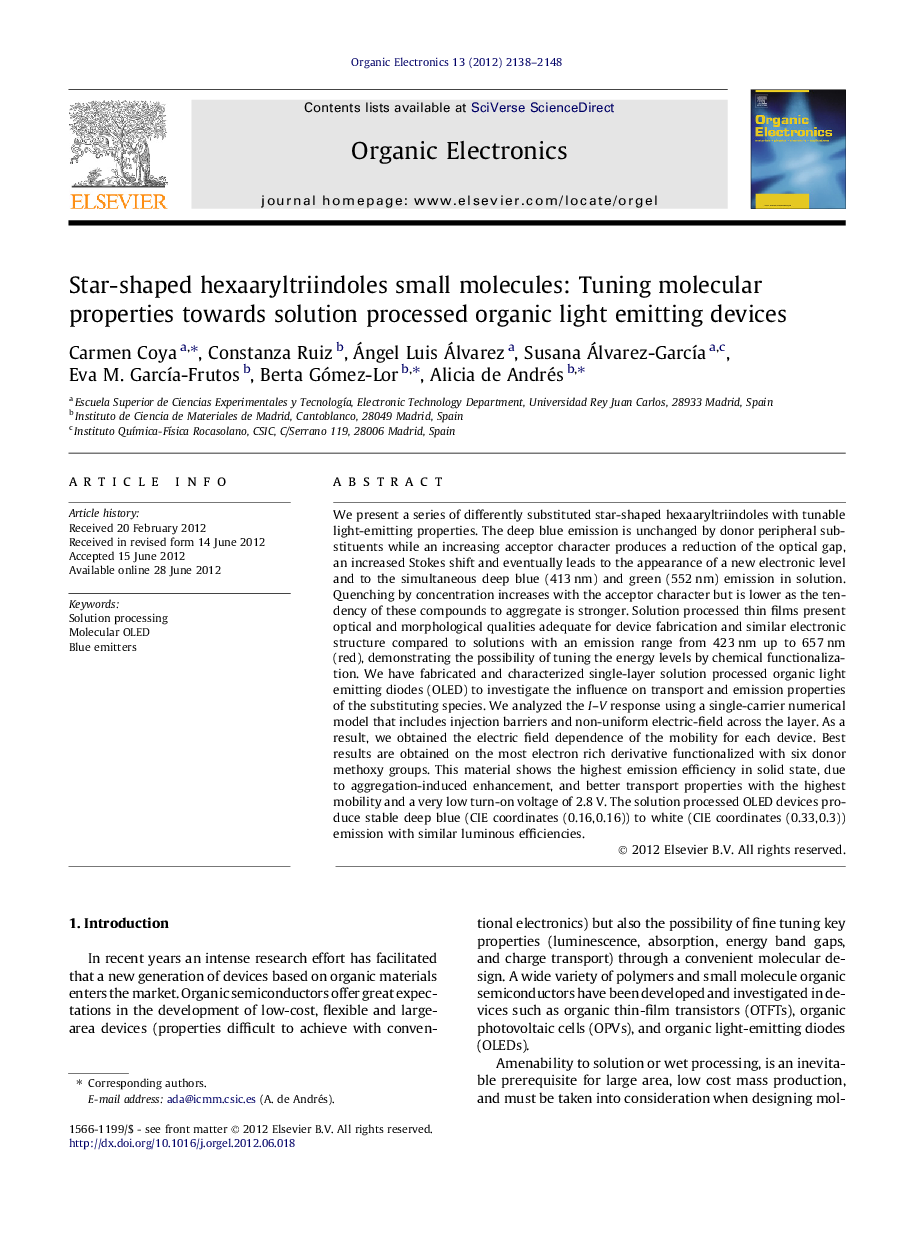| Article ID | Journal | Published Year | Pages | File Type |
|---|---|---|---|---|
| 1267389 | Organic Electronics | 2012 | 11 Pages |
We present a series of differently substituted star-shaped hexaaryltriindoles with tunable light-emitting properties. The deep blue emission is unchanged by donor peripheral substituents while an increasing acceptor character produces a reduction of the optical gap, an increased Stokes shift and eventually leads to the appearance of a new electronic level and to the simultaneous deep blue (413 nm) and green (552 nm) emission in solution. Quenching by concentration increases with the acceptor character but is lower as the tendency of these compounds to aggregate is stronger. Solution processed thin films present optical and morphological qualities adequate for device fabrication and similar electronic structure compared to solutions with an emission range from 423 nm up to 657 nm (red), demonstrating the possibility of tuning the energy levels by chemical functionalization. We have fabricated and characterized single-layer solution processed organic light emitting diodes (OLED) to investigate the influence on transport and emission properties of the substituting species. We analyzed the I–V response using a single-carrier numerical model that includes injection barriers and non-uniform electric-field across the layer. As a result, we obtained the electric field dependence of the mobility for each device. Best results are obtained on the most electron rich derivative functionalized with six donor methoxy groups. This material shows the highest emission efficiency in solid state, due to aggregation-induced enhancement, and better transport properties with the highest mobility and a very low turn-on voltage of 2.8 V. The solution processed OLED devices produce stable deep blue (CIE coordinates (0.16, 0.16)) to white (CIE coordinates (0.33, 0.3)) emission with similar luminous efficiencies.
Graphical abstractFigure optionsDownload full-size imageDownload as PowerPoint slideHighlights► Different peripheral groups have been introduced in star-shaped hexaaryltriindoles. ► The electronic properties of solutions, thin films and OLEDs are studied and compared. ► The emission wavelength has been tuned from deep blue to red (423 nm up to 657 nm, in thin films). ► The electric field dependence of the mobility for each solution processed OLED is obtained. ► Best emission efficiency and mobility are obtained on the derivative with six donor methoxy groups.
